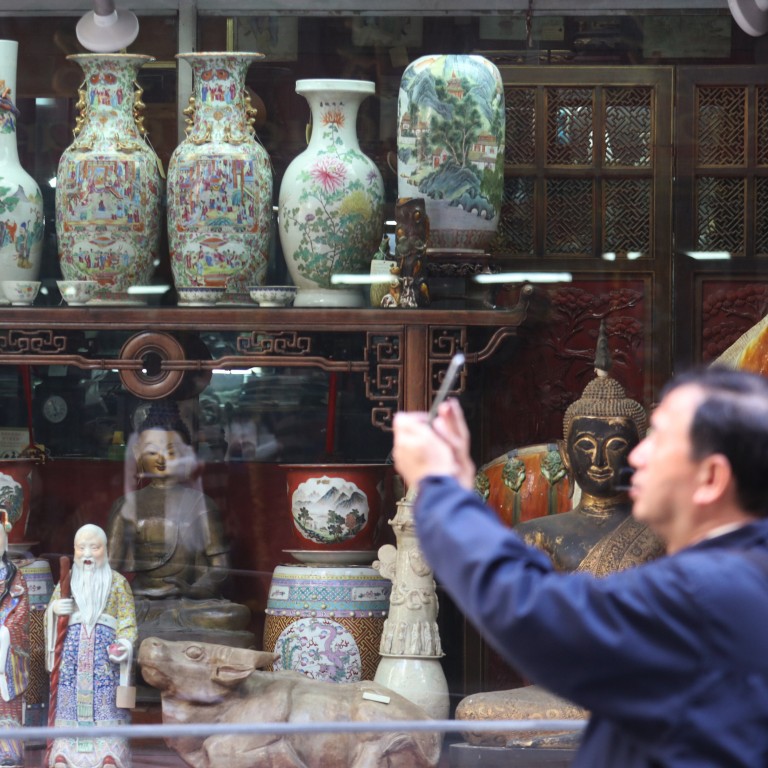
Antiques find new appeal with young, tech-savvy collectors as galleries mint NFTs linked to ancient artefacts
- Art galleries and dealers are using the blockchain to mint NFTs for ancient artefacts, ushering in a group of tech-savvy millennial clients
- Hong Kong-based Wui Po Kok Antique is selling 60 tokens linked to two legendary weapons from the Chinese Qing and Han dynasties
The fusty world of antiques is getting a youthful breath of fresh air, thanks to non-fungible tokens (NFTs).
One batch of 30 NFTs is linked to a bronze, ceremonial sword from the Qing dynasty (1636 to 1912) with gold decorations inspired by the “green dragon crescent blade”, a weapon wielded by the legendary warrior Guan Yu during the late Eastern Han dynasty of China (AD25 to 200).
He declined to disclose the selling prices of the swords, but said as a point of reference similar antique weapons have been known to fetch up to HK$1 million at public auction.
The NFT also confers the right to view the swords, which are being stored in a safe belonging to the gallery.
“We normally don’t open the weapons to public viewing, so this is an exclusive right granted only to the NFT holders,” said Cheng.
This inflationary pressure could trigger a sense of FOMO, or “fear of missing out”, that fuels demand, Cheng admitted.
Millennials have been driving big-ticket art and antique sales among high-net-worth individuals, according to a UBS survey of 500 people with investible assets of at least US$1 million in five markets including Hong Kong, the UK and the US.
Total sales in the global art market reached US$50.1 billion in 2020, down 22 per cent from 2019, according to a review published by UBS and Art Basel.
As Covid-19 forced events to be cancelled and lockdowns hit sales at art galleries, dealers turned to new technologies to generate interest among potential buyers who spend more time online.
Imperial Arts, which has a gallery in Beijing, auctioned off NFTs tied to five personal belongings of Napoleon Bornaparte in December, each conferring direct ownership of the physical objects.
They included a cane made of whalebone which the French emperor used to point at maps, and a golden snuffbox he owned. They were auctioned on NFT platform OpenSea, according to Olivier Marian, founder of the Swiss start-up Arteia, whose blockchain solutions helped mint the Napoleon NFTs.
“Younger people, newly enriched by cryptocurrencies, have the tokens to use as they like to spend them on collectibles. Our technology helps Imperial Arts connect with this group of people,” said Marian.
A group of four vintage-watch lovers will drop their first batch of NFTs in the metaverse in February featuring timepieces made by brands such as Rolex. The project, called New Old Stock, will mint tokens featuring a unique vintage watch design, with variations embedded in parts such as the watch index, dials or straps, said Quinton Ng, adviser to the project and owner of a vintage-watch shop in Hong Kong.
Additional reporting by Peggy Sito




